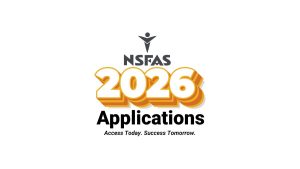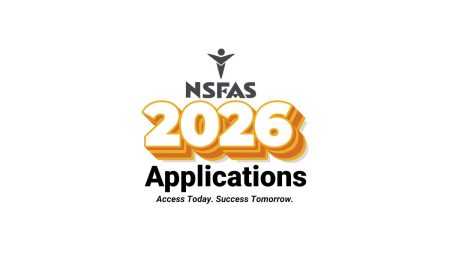The National Student Financial Aid Scheme (NSFAS) is an essential lifeline for many students pursuing higher education in South Africa. It offers financial support to those who need assistance with tuition fees, accommodation, and other study-related expenses. However, once students graduate or leave their studies, they are required to repay the loan they received from NSFAS. This can sometimes be a daunting task, especially when it comes to tracking the outstanding balance.
In this article, we’ll walk you through the process of checking your NSFAS loan repayment balance and how you can stay on top of your repayments.
1. Why is It Important to Check Your NSFAS Loan Balance?
Knowing your outstanding balance is crucial for several reasons:
- Avoiding Penalties: If you fail to make payments on time, you could be penalized. Checking your balance ensures that you are aware of how much you owe and when to make repayments.
- Accurate Financial Planning: Monitoring your balance allows you to plan your finances more effectively, ensuring you can budget for repayments and avoid financial strain.
- Clearing Your Debt Faster: By knowing your balance, you can set repayment goals and aim to pay off your loan faster, which can save you money on interest in the long run.
2. How to Check Your NSFAS Loan Balance: Different Methods
There are several ways to check your NSFAS loan repayment balance. Each method is straightforward, but the one you choose will depend on your convenience and preferences.
a. Using the NSFAS Website
The official NSFAS website offers a dedicated portal for students and loan recipients. Here’s how you can check your outstanding balance:
Visit the NSFAS Website: Go to the official NSFAS website
Log into Your Account:
- On the homepage, click on “MyNSFAS” to access your personal dashboard.
- If you already have an account, log in with your username and password. If you’re a first-time user, you’ll need to create an account by registering your details.
Navigate to the Loan Repayment Section:
- Once logged in, look for the “My Loan” or “Loan Repayment” section.
- In this section, you’ll find detailed information about your loan, including your outstanding balance, repayment terms, and payment history.
View Your Balance:
- Your current outstanding balance will be displayed along with any interest that has accumulated.
- You may also be able to view a breakdown of the amount you have paid so far.
Download or Print Your Loan Repayment Statement: If you need an official statement for reference, you can download or print the loan repayment document directly from the portal.
b. NSFAS Contact Center
If you’re unable to access the website or prefer to speak to someone directly, you can contact the NSFAS Contact Center. Here’s how:
Call the NSFAS Helpline:
- Dial 08000 2030 (toll-free) to reach NSFAS support.
- You can inquire about your outstanding balance and get information about the repayment terms and procedures.
Provide Your Details:
- Be ready with your NSFAS reference number and personal details (e.g., ID number) to verify your identity.
Request Your Statement:
- Ask the consultant to send you a loan repayment statement either via email or post.
c. Via Email
You can also get your balance by emailing NSFAS directly.
Email NSFAS Support: Send an email to info@nsfas.org.za with your personal details and request information about your outstanding loan balance.
Provide Your Details: Be sure to include your NSFAS reference number, ID number, and contact information.
Receive Your Statement: NSFAS will respond with your loan repayment details and any other information you may need.
d. Using USSD Codes
For those who don’t have access to the internet or prefer using their mobile phones, NSFAS has a USSD service. Here’s how to check your balance:
Dial the USSD Code: Dial 120176# from your mobile phone to access NSFAS’s mobile platform.
Follow the Prompts:
- The system will prompt you to enter your NSFAS reference number and other personal details.
- Once verified, you’ll receive your loan repayment balance via SMS.
3. Understanding Your Loan Repayment Terms
Once you’ve successfully checked your outstanding balance, it’s important to understand how the repayment process works. Here are the key points to note:
a. Repayment Threshold
Repayment begins once you are employed and your annual salary exceeds a certain threshold, which is currently set at R30,000 per year. If you earn below this amount, you are not required to make repayments.
b. Repayment Period
The standard NSFAS loan repayment period is 10 years, but it can be adjusted based on your income. The loan is interest-free, but it is important to make regular payments to clear the debt within the specified time frame.
c. Payment Frequency
- Monthly Payments: Once your income reaches the threshold, NSFAS will deduct a percentage of your salary each month to repay the loan.
- Annual Payments: In some cases, NSFAS may offer the option to make annual lump sum payments.
d. Repayment Percentage
The amount deducted from your salary depends on your income. Typically, the repayment percentage ranges from 3% to 8% of your gross salary, depending on how much you earn.
4. Repayment Options and Flexibility
NSFAS offers flexibility in how you can make repayments:
a. Direct Bank Payments
If you prefer, you can make manual repayments via your bank. Simply log into your bank’s online platform and transfer the agreed-upon repayment amount directly to NSFAS’s bank account.
b. Debit Order Arrangement
For easier management, you can set up a debit order with your bank. This will allow for automatic monthly deductions from your bank account to cover your NSFAS loan repayments.
c. Early Repayment
If you are able to pay off your loan faster, you can make early repayments without any penalties. This can help reduce the interest and the overall loan balance.
5. What Happens if You Fail to Repay Your Loan?
If you do not make payments as required, your loan may become overdue, and NSFAS could take legal action to recover the money. This could include garnishing your wages or negatively impacting your credit rating.
Check also: A Vision for NSFAS Under New Leadership -Transforming Student Funding
Monitoring your NSFAS loan repayment balance is essential to ensure that you are on track to clear your debt. Whether you choose to check your balance online, contact NSFAS directly, or use the USSD code, the process is straightforward and can help you stay informed. Understanding your repayment terms and making timely payments will not only help you avoid penalties but also help you take charge of your financial future.
By following the steps outlined above, you can efficiently manage your NSFAS loan repayment and work towards achieving financial freedom.










